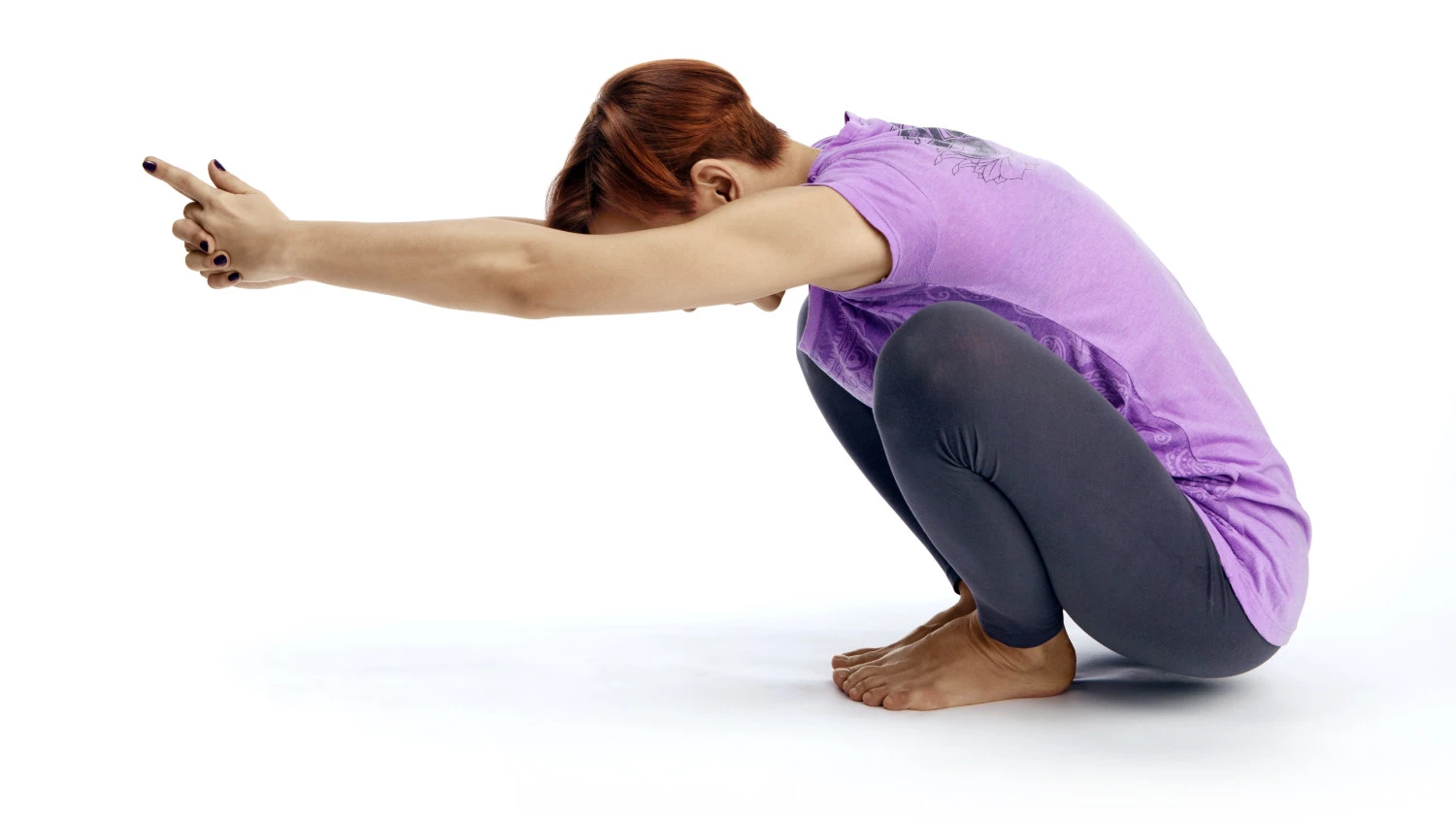Yoga Pose Primer: Malasana (Garland Pose) – Strengthen Your Pelvic Foundation

What’s in a name? As I researched Malasana, I found out that the most common translation, “Garland Pose,” has nothing to do with its more literal translation. Malasana supports apana, the downward-flowing energy that governs elimination. Apana energy grounds agitation, making Malasana a great counterpose for stress. Malasana relieves constipation. In addition, it stretches the ankles, groins, and lower legs and tones the abdomen and pelvic floor.
Malasana (Garland Pose)- How the Asana Got its Name
One of my favorite things about writing about asanas is that in the process of researching poses, I often learn something new. Even as I head into my 42nd year of practice, I’m well aware that I know only a tiny fraction of what there is to know about yoga. So, I’m always delighted when I uncover something that helps me understand the practice better.
Such is the case with Malasana, commonly known as “Garland Pose.” I’ve always wondered about its name. I figured it came from the Sanskrit word “mala”—those little round rosary-like beads used for meditation—but I could never figure out what squatting had to do with a necklace. So, I embarked on some Google research to see if there was a mythological reference that might help me make the connection.
As it turns out, Malasana’s name has nothing to do with garlands or beads. Due to a mistranslation that doesn’t take into account the subtle differences between Sanskrit’s long and short “a,” the word that would be correctly transcribed as “maalaa” (garland) was confused with the word “mala” (excrement). According to the Indian ashram Jaisiyaram’s website, Malasana correctly translates to “Defecating Pose.”
Benefits of Squatting for Pelvic Floor Muscles

Even though “Garland Pose” sounds so much more genteel, the latter translation makes a whole lot more sense. India’s potties are different from ours. Not everyone has one in their home, and where there are formal facilities, traditional ones are at ground level, making squatting the number one position for accomplishing number two.
In an online interview about yoga’s benefits for pelvic floor balance, Yoga U teacher Leslie Howard explains that squatting is far more helpful for strengthening pelvic floor muscles than traditional kegel exercises. Kegels, she says, only serve to tighten—not strengthen—the pelvic floor as they tilt the sacrum under and weaken the glutes. Squatting, she says, creates a posterior pull on the sacrum that balances the work of the pelvic floor muscles.
How to Practice Malasana (Garland Pose)

Practicing Malasana is simple, although depending on the flexibility of your ankles, knees, and lower legs, it may require some helpful props. Have handy a foam or cork wedge or a folded blanket, in addition to a nonskid mat. If you’ve had or are contemplating knee surgery, the knee flexion required for Malasana may be too extreme. It’s best not to practice Malasana if your knees are compromised.
- Start by squatting on a nonskid mat with your feet hip-width apart and parallel. Let your heels descend toward the floor. If they don’t reach, place a wedge or folded blanket under your heels so that they are evenly grounded. You may need as much as three or four inches of height under your heels.
- Spread your heels, the balls of your feet, and your toes, grounding evenly across your feet.
- Once you feel stable, widen your legs so your torso fits snugly between your thighs. Place your hands in Anjali Mudra (Prayer Position). Take five to ten deep breaths to settle into the pose.
New Zealand yoga teacher Donna Farhi notes that in her travels around the world, she’s found that dysfunction in the sacroiliac joint (SI joint)—the meeting of the two posterior surfaces of the pelvis with the sacrum, the triangular-shaped bone at the base of the spine—has become the most common injury among female yoga practitioners. Since the hip joints, legs, and SI joints are symmetrical in Malasana, practicing it can be helpful when my hypermobile sacrum becomes rotated inside the joint, causing a painful pinching sensation.
Malasana (Garland Pose) Variation
The following simple variation helps correct SI joint dysfunction and can relieve sciatica pain. It also tones your abdomen. While in Malasana, squeeze in on your shoulders with your knees and inner thighs. As you do this, note how your abdomen tones back toward your spine and your back body expands. Take five or so breaths before releasing the squeeze. Repeat a few more times.
Even though Sanskrit is an ancient language mainly unspoken these days, except among its scholars, some of its root syllables are familiar to us in English and Romance languages. This is true for the root “mal,” which turns a perfectly nice English word into something contrary when used as a prefix. The word also has rather wicked connotations in Italian, Spanish, and French. But knowing the truth about Malasana’s etymology only increases my appreciation of it. If the key to freedom is letting go of what is no longer needed, then Malasana just might be one of yoga’s most auspicious asanas.
Also, read...
Warrior I Pose: 5 Strengthening Variations
4 Ways to Practice Locust Pose
Deepening Your Home Yoga Practice: An Interview with Judith Hanson Lasater
Related courses
Breath as Medicine: Yogic Breathing for Vital Aging
Yoga and Myofascial Release: Releasing Chronic Tension with the Bodymind Ballwork Method

Charlotte Bell began practicing yoga in 1982 and began teaching in 1986. She was certified by B.K.S. Iyengar in 1989 following a trip to Pune. In 1986, she began practicing Insight Meditation with her mentors Pujari and Abhilasha Keays. Her asana classes blend mindfulness with physical movement. Charlotte writes a column for Catalyst Magazine and serves as editor for Yoga U Online. She is the author of two books: Mindful Yoga, Mindful Life, and Yoga for Meditators, both published by Rodmell Press. She also edits Hugger Mugger Yoga Products’ blog and is a founding board member for GreenTREE Yoga, a non-profit that brings yoga to underserved populations. A lifelong musician, she plays oboe and English horn in the Salt Lake Symphony and the folk sextet Red Rock Rondo whose 2010 PBS music special won two Emmys.



